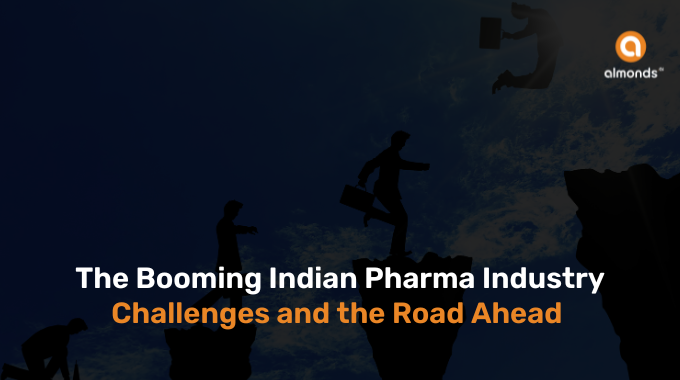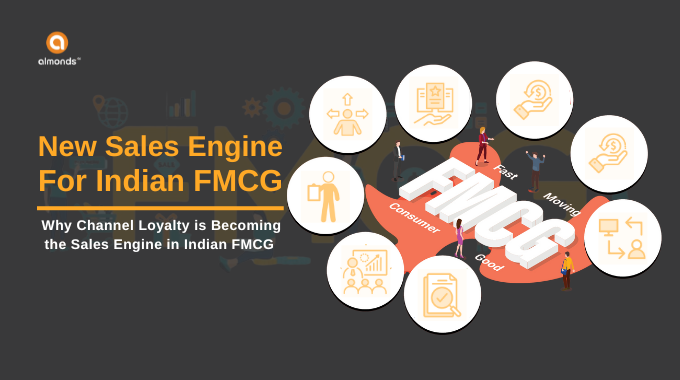The Indian pharmaceutical industry is a global powerhouse, often hailed as the ‘pharmacy of the world.’ It’s a massive industry, expected to reach $130 billion by 2026 and a projected $450 billion by 2047. Beyond meeting domestic needs, India supplies over 20% of the global market and addresses 60% of global vaccine demand.
This impressive growth comes with complex challenges that the industry must navigate to maintain its trajectory. This blog post explores the key challenges facing the Indian pharmaceutical industry and suggests potential solutions for a thriving future.
Challenges in The Indian Pharmaceutical Industry
Pharmaceutical manufacturing companies in India face several challenges related to their distribution channels. Here are some of the key challenges:
1. Regulatory Compliance: A Hurdle for Growth
One of the biggest challenges is ensuring strict adherence to international quality standards and regulations. A complex and ever-changing regulatory environment, especially for small and medium enterprises (SMEs), creates hurdles and delays in bringing new drugs to market. Streamlining regulations and providing better guidance can help companies navigate this complex landscape more efficiently.
2. Balancing Affordability with Intellectual Property
Balancing the need for affordable healthcare with intellectual property (IPR) rights is a delicate act. Legal battles and patent expirations significantly impact market dynamics. While protecting innovation is vital, fostering an environment that encourages investment in new drug development is equally important. Finding the right balance is crucial for the industry’s long-term success.
3. Maintaining Quality at Scale
Ensuring consistent quality across a vast production landscape is paramount. Strict quality control measures are essential to avoid product recalls and maintain consumer trust. Combating the prevalence of substandard and counterfeit drugs requires robust quality control systems and stricter enforcement measures.
4. Infrastructure Limitations: A Roadblock to Efficiency
Despite its strengths, India’s pharmaceutical supply chain faces limitations due to inadequate infrastructure. These limitations hinder efficient production and distribution, making it difficult for companies to scale operations and meet growing demand. Investing in infrastructure improvements is crucial to overcome these logistical hurdles.
5. A Fragmented Distribution Network: A Modernization Challenge
The Indian pharmaceutical industry’s rapid growth hasn’t translated into a modernized distribution system. The network remains fragmented, lacking significant reforms and facing resistance from entrenched players. Modernizing the distribution network with improved regulations and streamlined processes can create efficiencies and improve delivery times.
6. Price Controls: Balancing Affordability and Profitability
Government-imposed price controls ensure affordable medication but can significantly impact profit margins for pharmaceutical companies. This creates a challenge in balancing affordability with profitability, potentially hindering investments in research and development (R&D). Exploring alternative solutions, such as targeted subsidies, could help ensure affordability without stifling innovation.
7. The Challenge of Supply Chain Management
Supply chain management (SCM) presents a significant challenge for Indian pharmaceutical companies. Distribution costs in India are considerably higher compared to developed nations. Investing in more efficient logistics solutions and infrastructure improvements can help reduce these costs and streamline the supply chain.
8. Long-Channel Inventory Management: A System Ripe for Reform
The multi-layered distribution channel with limited transparency creates inefficiencies in inventory management. Companies rely heavily on potentially inaccurate sales data from wholesalers, leading to overstocking and expired drugs. Implementing reforms and leveraging technology for better data collection can optimize inventory management and reduce waste.
9. Competition Between Wholesalers and Retailers: A Squeeze on Profits
The rise of mergers and acquisitions has increased competition between wholesalers for each company, leading to pressure from retailers for deeper discounts and longer credit periods. This can squeeze profits for wholesalers and potentially impact the overall supply chain. Finding ways to improve communication and collaboration between wholesalers and retailers can address these competitive pressures.
10. Brand Substitution: A Threat to Innovation
The surge of generic drugs has significantly impacted sales for Indian pharmaceutical companies. Generic drugs are often much cheaper than branded medications. To compete, generic companies offer high trade margins to retailers, sometimes up to 500%, incentivizing brand substitution. This can discourage investment in brand development and new drug innovation. Encouraging fair competition and fostering a culture of brand loyalty can help mitigate this challenge.
11. Drug Recalls: The Need for a Robust System
India lacks a foolproof system for recalling drugs due to the fragmented distribution network. Implementing technologies like Radio Frequency Identification (RFID) can track products throughout the supply chain, facilitating efficient recalls and preventing counterfeit drugs from entering the market.
12. Going Global: The Challenge of Cold-Chain Management
As Indian companies seek to expand globally, they must develop advanced cold-chain management practices to maintain product quality during transport. Investing in cold-chain logistics infrastructure and adopting best practices are essential for successful global expansion.
Solutions for the Indian Pharma Industry
The Indian pharmaceutical industry is a global leader, but even leaders face challenges. The industry must navigate a complex landscape to ensure consistent quality, affordability, and innovation. Fortunately, there are solutions available. In this section, we’ll explore various strategies the industry can employ to overcome these hurdles and solidify its position as a global powerhouse.
Here, we’ll delve into solutions for some of the key challenges discussed earlier:
1. Overcoming Dependence on China for APIs
The Indian pharmaceutical industry’s heavy reliance on China for Active Pharmaceutical Ingredients (APIs) is a major concern, as highlighted by the COVID-19 pandemic. Disruptions in China’s supply chain exposed vulnerabilities and led to shortages of critical materials. To mitigate this risk, India needs to:
- Promote Domestic API Production: Government incentives and support for domestic API manufacturers can encourage local production and reduce dependence on China.
- Diversify API Sources: Building partnerships with reliable API suppliers in other countries can create a more robust and resilient supply chain.
2. Supply Chain Disruptions: Building Resilience
The pandemic exposed the fragility of global supply chains due to quarantine policies and logistical disruptions. To address this:
- Invest in Smart Warehousing: Implementing automated warehousing solutions can improve efficiency and reduce reliance on manual labor, minimizing disruptions during unforeseen events.
- Develop Contingency Plans: Having robust contingency plans in place can help companies adapt to sudden changes and minimize disruptions.
3. Rising Prices: A Threat to Affordability
The pandemic caused a significant rise in the cost of key ingredients, impacting affordability. To address this:
- Explore Alternative Sources: Identifying and sourcing ingredients from cost-effective, reliable suppliers can help manage price fluctuations.
- Focus on Efficiency: Optimizing production processes and reducing waste can help companies absorb some of the cost increases without compromising affordability.
4. Government Control on Drug Pricing: Striking a Balance
Government control on drug pricing directly impacts R&D investment, potentially hindering innovation. To address this:
- Implement Risk-Sharing Models: Exploring risk-sharing models where the government co-funds high-risk R&D projects can incentivize innovation without compromising affordability.
- Reward Innovation: Providing incentives for companies that develop new drugs, such as patent extensions or tax breaks, can stimulate R&D investment.
5. Pharmacy Loyalty Programs: Building Stronger Relationships
Pharmacy loyalty programs can be a powerful tool for the pharmaceutical industry to build stronger relationships with various stakeholders, including patients, pharmacists, and doctors. By incentivizing desired behaviors, loyalty programs can improve medication adherence, promote specific drugs or treatment plans, and generate valuable data for the industry.
Conclusion: A Thriving Future for the Indian Pharma Industry
The Indian pharmaceutical industry is a vital player in the global healthcare landscape. By acknowledging the challenges and implementing the solutions outlined above, the industry can navigate these hurdles and continue its impressive growth trajectory. Investing in innovation, improving supply chain efficiency, and fostering a culture of collaboration between all stakeholders is key to securing a thriving future for the Indian pharma industry.







